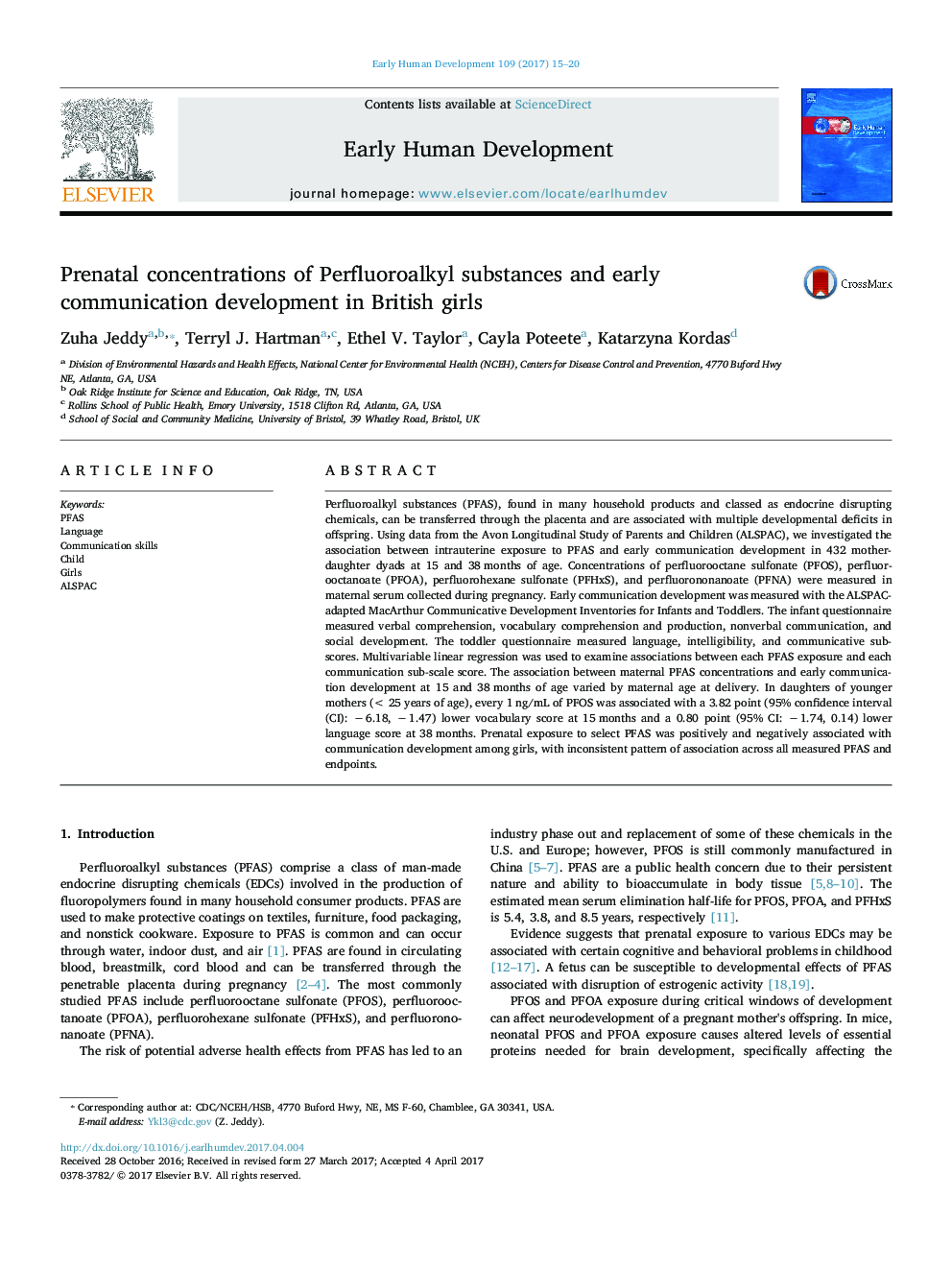| Article ID | Journal | Published Year | Pages | File Type |
|---|---|---|---|---|
| 5691118 | Early Human Development | 2017 | 6 Pages |
Abstract
Perfluoroalkyl substances (PFAS), found in many household products and classed as endocrine disrupting chemicals, can be transferred through the placenta and are associated with multiple developmental deficits in offspring. Using data from the Avon Longitudinal Study of Parents and Children (ALSPAC), we investigated the association between intrauterine exposure to PFAS and early communication development in 432 mother-daughter dyads at 15 and 38 months of age. Concentrations of perfluorooctane sulfonate (PFOS), perfluorooctanoate (PFOA), perfluorohexane sulfonate (PFHxS), and perfluorononanoate (PFNA) were measured in maternal serum collected during pregnancy. Early communication development was measured with the ALSPAC-adapted MacArthur Communicative Development Inventories for Infants and Toddlers. The infant questionnaire measured verbal comprehension, vocabulary comprehension and production, nonverbal communication, and social development. The toddler questionnaire measured language, intelligibility, and communicative sub-scores. Multivariable linear regression was used to examine associations between each PFAS exposure and each communication sub-scale score. The association between maternal PFAS concentrations and early communication development at 15 and 38 months of age varied by maternal age at delivery. In daughters of younger mothers (< 25 years of age), every 1 ng/mL of PFOS was associated with a 3.82 point (95% confidence interval (CI): â 6.18, â 1.47) lower vocabulary score at 15 months and a 0.80 point (95% CI: â 1.74, 0.14) lower language score at 38 months. Prenatal exposure to select PFAS was positively and negatively associated with communication development among girls, with inconsistent pattern of association across all measured PFAS and endpoints.
Related Topics
Health Sciences
Medicine and Dentistry
Obstetrics, Gynecology and Women's Health
Authors
Zuha Jeddy, Terryl J. Hartman, Ethel V. Taylor, Cayla Poteete, Katarzyna Kordas,
